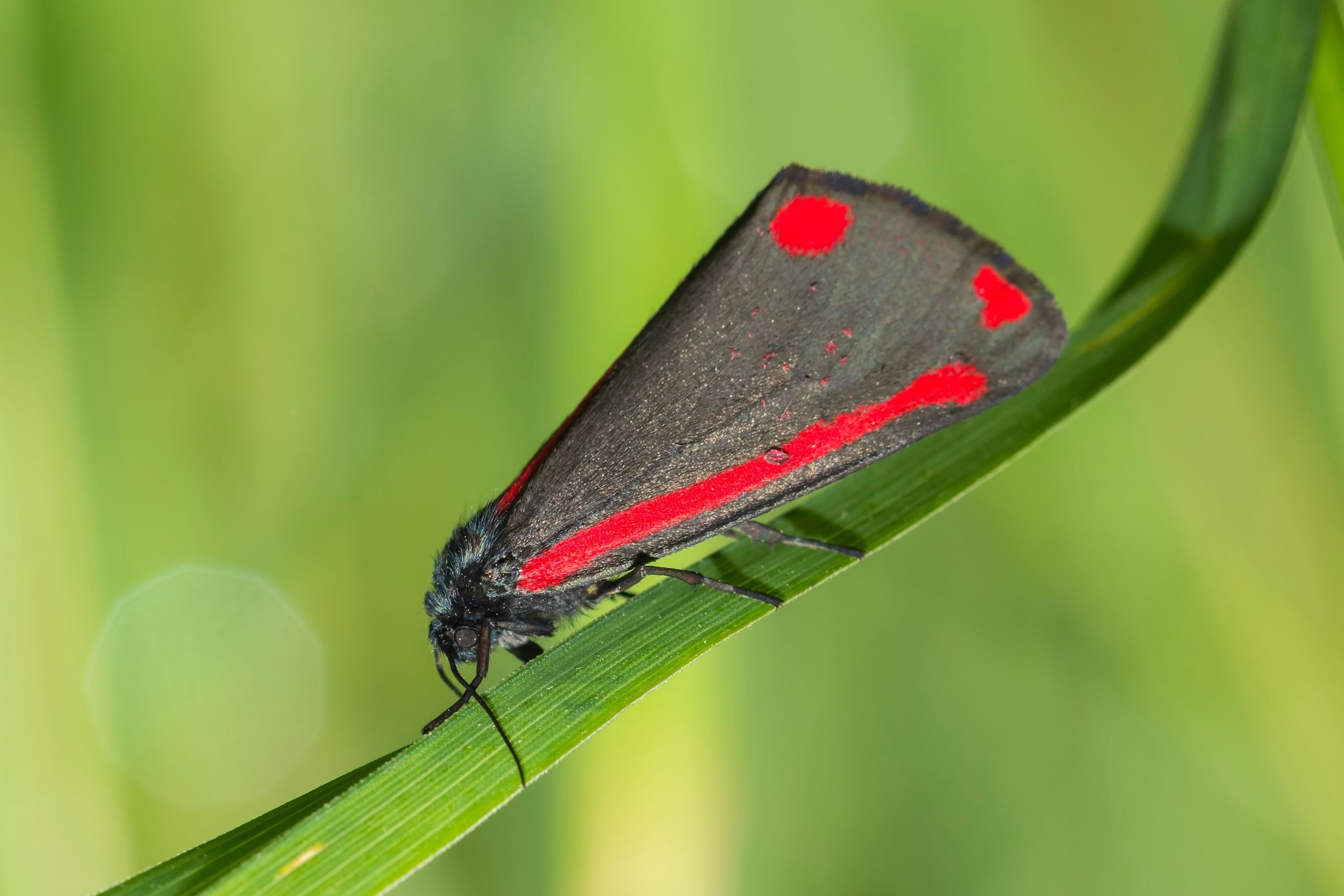Cinnabar moth
(Tyria jacobaeae)

Description
Tyria jacobaeae) is a brightly coloured arctiid moth found as a native species in Europe and western and central Asia then east across the Palearctic to Siberia to China. It has been introduced into New Zealand, Australia and North America to control ragwort, on which its larvae feed. The moth is named after the red mineral cinnabar because of the red patches on its predominantly black wings. The species was first described by Carl Linnaeus in his 1758 10th edition of Systema Naturae. Cinnabar moths are about 20 mm (0.79 in) long and have a wingspan of 32–42 mm (1.3–1.7 in). Cinnabar moths are day-flying insects with distinctive pinkish-red and black wings. There is little variation in patterning, although on rare occasions the red markings may be replaced with yellow, or the forewing is entirely red with a black border, or the wings are completely black. Like many other brightly coloured moths, it is unpalatable; the larvae use members of the genus Senecio as food plants. Many members of the genus have been recorded as food plants, but of New World Senecio and Packera species, long-term population success has only been confirmed on the North American native plant Senecio triangularis. Other plant species, such as groundsel, are sometimes used, but larval and population survival tends to be reduced. Newly hatched larvae feed from the underneath of ragwort leaves within the area of their old eggs. The larvae absorb toxic and bitter tasting alkaloid substances from the food plants, and assimilate them, becoming unpalatable themselves. The bright colours of both the larvae and the moths act as warning signs, so they are seldom eaten by predators. An exception is among different species of cuckoo which eat hairy and poisonous caterpillars including cinnabar moth larvae. Females can lay up to 300 eggs, usually in batches of 30 to 60 on the underside of ragwort leaves. When the caterpillars (larvae) hatch they feed on and around the area of the hatched eggs but as they get bigger and moult (instars) they mainly feed on the leaves and flowers of the plant, and can be seen out in the open during the day.
Taxonomic tree:







